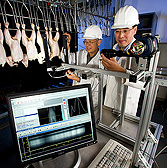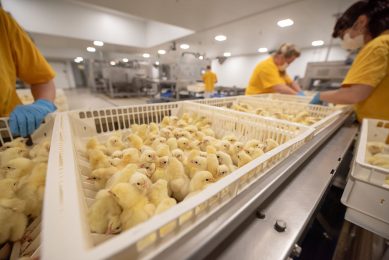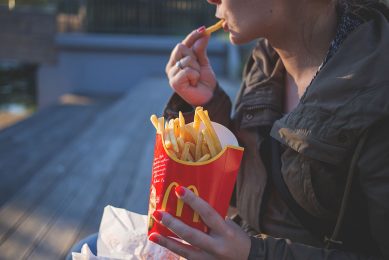New technologies for CSI: chicken scene investigation

Scientists at the Instrumentation and Sensing Laboratory (ISL) of the US Agricultural Research Service are designing a range of portable inspection gadgets for poultry operations.
The ISL range includes a hardhat with a small camera and a flashlight that gives off specially filtered light, as well as safety glasses that include a wearable miniature computer monitor that displays data from a miniature computer on the inspector’s belt. The data tells the inspector whether there is any faecal matter on the processing equipment.
Also in the range is a pair of binoculars with lenses that filter special bands of light to check for disease, defects, or faecal matter on the meat, produce, or equipment.
There’s also a hand-held device that shines filtered light to do a sanitation check of the processing plant. The device has a camera that sends images to another eyewear-mounted computer display. White specks on the image reveal faecal matter.
The design team is led by Yud-Ren Chen and includes biophysicist Moon Kim, agricultural engineer Kuanglin Chao, and visiting scientists from around the globe.
Chen, Chao, and visiting scientist Chun-Chieh Yang have finished work on a high-speed on-line imaging system for chicken inspection. They are turning over a prototype to industry as part of a cooperative research and development agreement with Stork-Gamco of Gainesville, Georgia, a major manufacturer of chicken-processing equipment.
Because all these systems use optically filtered light and opto-electronics to “see,†they are called “machine vision†or “optical sensing†systems. At the heart of these machine vision systems is a digital multispectral camera that can take photos at different wavelengths simultaneously and can even detect light invisible to the naked eye. The systems include the latest, fastest cameras of this type. All the systems rely on two or three wavelengths chosen to do the best job of seeing special features.
Fully funded by ARS, with additional funds from industry, Chen’s team works with both industry and universities, such as the University of Kentucky and the nearby University of Maryland.













